What Are SEO KPIs?
Key Takeaways
- SEO KPIs are crucial indicators that measure the success of your website’s SEO efforts. They help you make smarter, data-driven decisions to improve your website and overall online presence.
- The right KPIs tell you important things about your website’s visibility and how users interact with it. It’s an indicator of how well your content brings in organic traffic.
- Make your KPIs relevant for your specific business objectives, industry, and audience. This strategic alignment helps you make sure your SEO activity delivers the maximum possible impact on growth and revenue!
- This allows for consistent monitoring of progress and performance, more importantly, reveals opportunities for continuous improvement and technical issues that need to be addressed.
- From your focus to the tools you use, all these factors contribute to moving the ball forward on a clear path of continuous improvement and success.
- Ongoing monitoring and adjustment of KPIs not only protects businesses from becoming dinosaurs but prepares them to thrive long-term in an ever-changing, highly competitive digital landscape.
SEO KPIs are metrics that measure the success of a website’s search engine optimization efforts. They’re tracking how many people click through from Google. They keep an eye on what pages people are entering and how quickly they bounce.
SEO KPIs are how often a page shows up in search results and its CTRs. Most importantly, they correlate with your site’s visibility in rankings for important keywords. Agencies and teams across the U.S. depend on these numbers to know what works.
They define clear objectives and prioritize efforts on what to improve or update. Concise, clear SEO KPIs make it easier to sift through the noise, allowing teams to identify true wins or losses quickly.
The following sections explain the most important SEO KPIs and why they should be prioritized by your team.
What Are SEO KPIs, Really?
SEO KPIs—key performance indicators—are the primary yardsticks for measuring SEO success and determining if all your SEO efforts are worthwhile. These metrics indicate how your site is performing overall in search, attracting positive organic search traffic, and user engagement.
Good KPIs cover everything from how many people see your site to how often they act, like clicking a button or making a purchase. KPIs provide visibility indicators, such as search visibility, which is a measure of how often your site appears for valuable keywords you’re targeting. Tools such as Google Search Console make it easy to monitor this.
Organic traffic is the other major KPI! These people discover your website via organic, non-paid search results, and they’re the easiest to monitor with tools such as Google Analytics. User engagement metrics, like bounce rate and session duration, let you know if your content is delivering on user expectations and contributing to your overall SEO performance.

Conversion rates indicate how many of those visitors completed the desired next step, whether that’s filling out a contact form or making a purchase. This connects your SEO work to your actual business goals and helps in evaluating the SEO ROI.
Once again, KPIs are not just arbitrary numbers—they do set the direction for decision making. They shine a spotlight on what’s working, what’s broken, and where you should focus your efforts. When monitored on a long-term basis, top SEO KPIs can show trends and allow you to identify problems before they become more serious.
For instance, a decrease in website health scores from a site audit tool can indicate technical SEO issues before they’re noticed by users. Aligning your KPIs with your strategy will ensure that you are measuring things that truly matter.
Setting specific, quantifiable goals for each KPI allows you to track growth and learning over time. Image credit: ROI on investment is another important KPI, letting you know whether or not your investment in SEO is returning value.
Why KPIs Matter More Than Ever

KPIs allow teams to quickly identify what’s successful and should be doubled down on and what should be adjusted. With digital marketing increasingly becoming a crowded space, you need more focused KPIs with clearer data in your corner.
KPIs allow you to course correct your SEO strategy based on data, not assumptions, so you can ensure your site is always progressing toward tangible objectives.
Beyond Numbers: Your SEO Health Check
By measuring KPIs regularly, you’re able to see a true picture of your website’s health. These can assist in identifying technical problems, such as pages loading slowly or links being broken, as well as indicating user retention.
The key is to use a combination of KPIs to provide the overall picture rather than just one side of the story.
The Real Goal of Tracking KPIs
Ultimately, the purpose of tracking KPIs isn’t to hit a number and celebrate. Connecting your SEO work to KPIs aligns your efforts with larger organizational goals.
Continuing to set targets and continually looking back on them helps to ensure that your plan remains focused and your results transparent.
Pick Your SEO Guiding Stars

The right SEO KPIs point your team in the direction that matters most. KPIs need to align with your business objectives, rather than arbitrary industry standards. A clothing retailer in Los Angeles may care about product page visits, while a consulting firm in New York might track lead forms or local search rankings.
These guiding stars ensure that your SEO efforts are targeted and efficient, enabling you to prioritize and invest where data indicates the greatest impact.
Match KPIs to Business Aims
Sales growth, brand visibility, customer engagement, lead generation, and cost efficiency are all important factors. SEO KPIs should align with your overall business objectives. If you’re interested in generating better quality leads, choose KPIs such as conversion rate or cost per lead.
Specific definitions of success are important. Does a “win” look like increased rankings, more phone calls, or bigger online orders? KPIs allow you to mark your progress toward reaching those goals, providing a clear, quantifiable way to see progress in real-time.
E-commerce KPI Essentials

E-commerce stores heavily rely on these three metrics: conversion rate, average order value, and product page visits. High cart abandonment rates indicate clear leaks in the sales funnel, and repairing these leaks can lead to increased revenue.
The share of organic traffic going to your most important product pages indicates how effective your store is at attracting shoppers through SEO. Customer lifetime value is a solid leading indicator of future growth.
Key Metrics for Bloggers
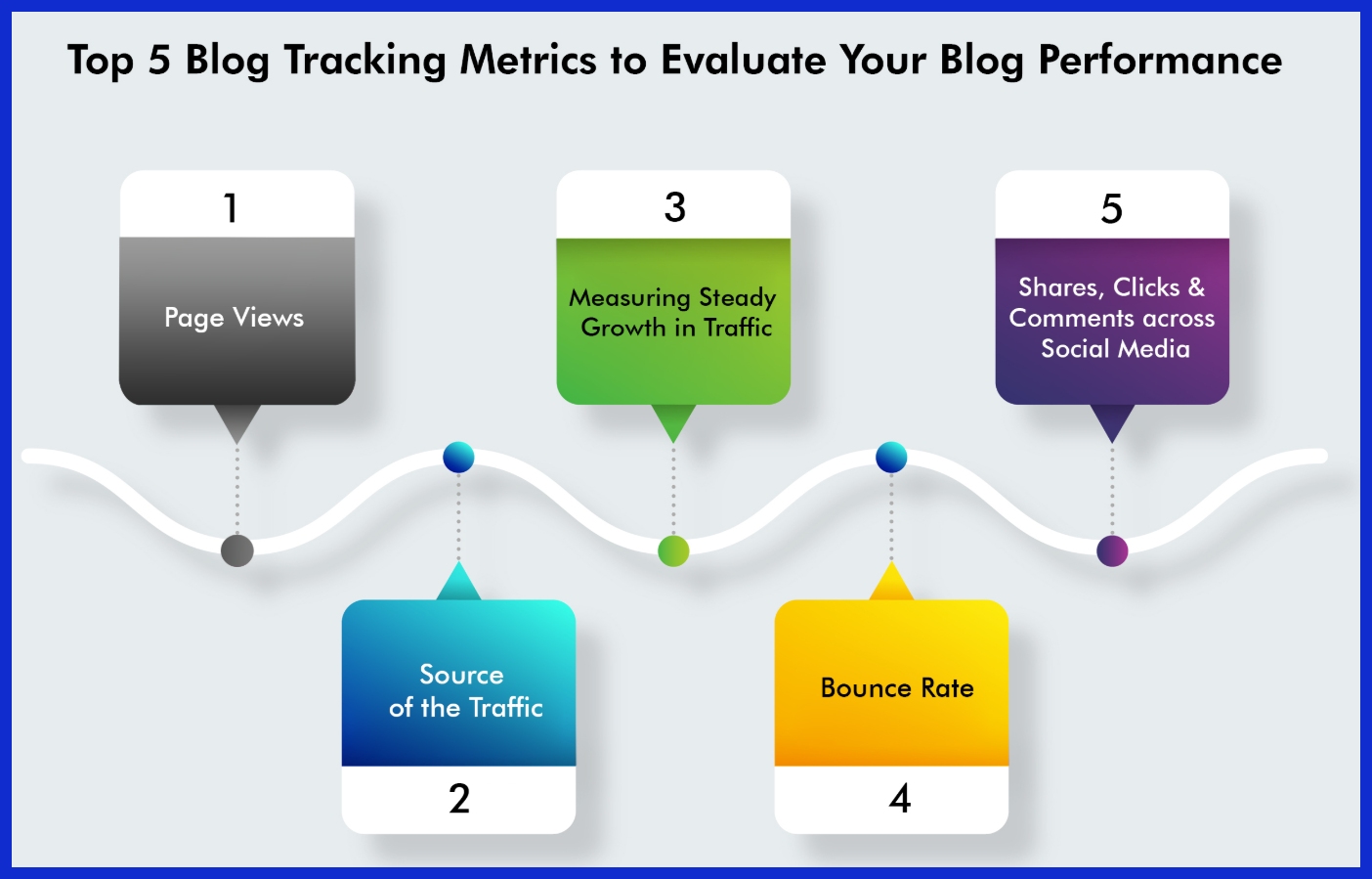
Bloggers can keep an eye on organic traffic growth, comments, and social shares. If you’ve already published a lot of content, keyword rankings should inform what to write next.
Referral traffic from social media tells you which posts resonate with readers.
Service Business KPI Focus
The lead pipe dream leads and conversion rates are what it comes down to for service businesses. Measure how much you spend to acquire a new client.
Customer satisfaction scores and local search visibility (i.e., Google Maps) show the quality of your service and ability to bring clients to you from your immediate area.
Local vs. Global KPI Sets
| KPI | Local Focus | Global Focus |
|---|---|---|
| Organic traffic | Geo-targeted | Worldwide |
| Keyword rankings | City/region keywords | Broad/global terms |
| Conversion rate | Local landing pages | Multi-language |
| Reviews | Local platforms | International sites |
Local businesses need to enhance their search engine visibility to show up in nearby searches, as local trends can significantly differ from global trends.
Essential SEO KPIs to Watch
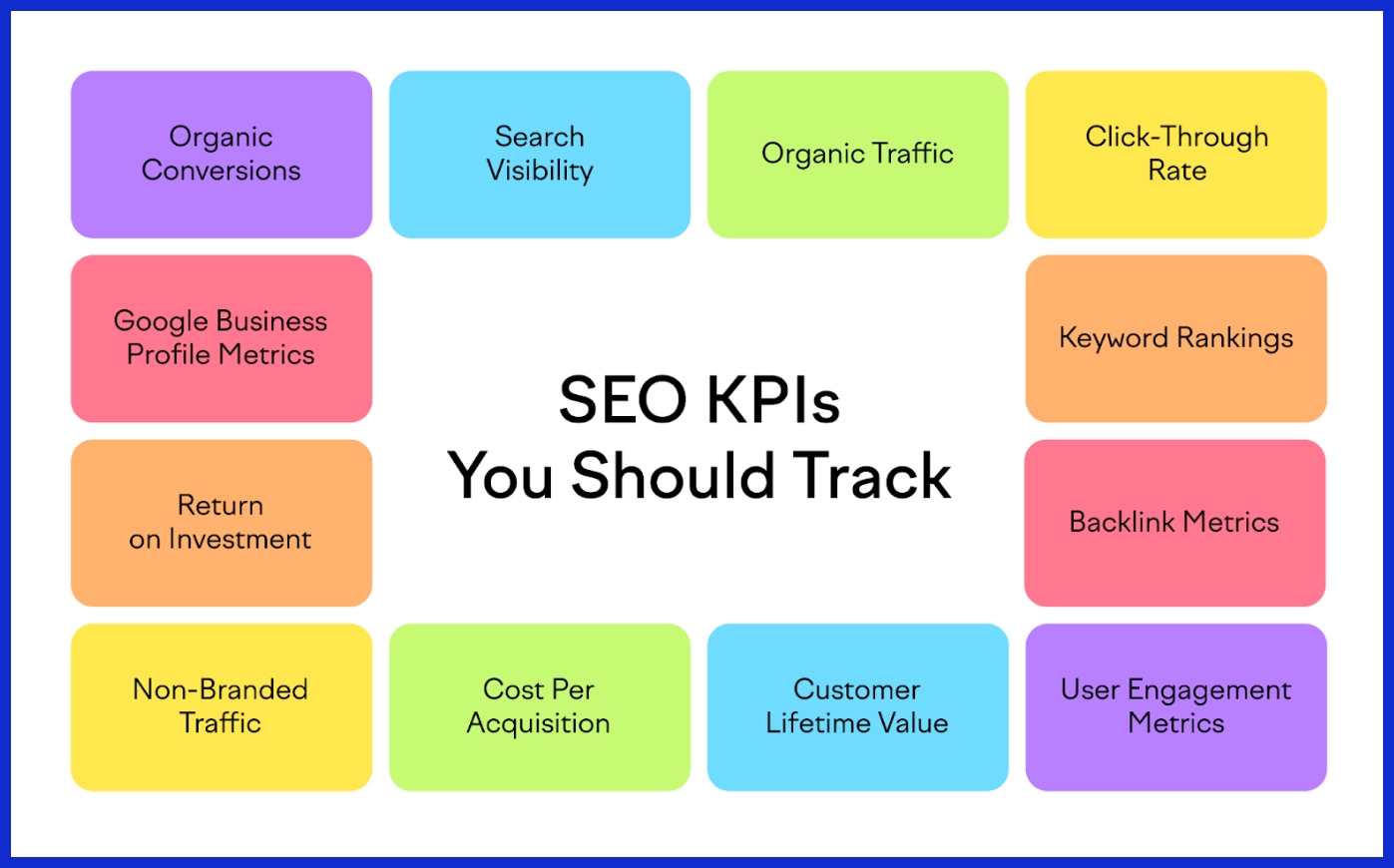
Measuring the right SEO key performance indicators (KPIs) is essential to any business looking to understand what’s effective and what’s not. That focus helps them determine where they need to direct their resources moving forward. While all organizations have different needs, these KPIs are essential for any data-driven SEO program.
These are important KPIs to show where your website stands on search. They signal the quality of your user engagement and the business outcomes of your SEO and marketing initiatives. Tracking both leading indicators—like keyword rankings or technical health—and lagging indicators—such as conversions or lead generation—keeps your strategy grounded in reality. Your ideal KPI recipe will always vary depending on your business model and objectives.
The one thing that’s constant is the need for regular review. In the following sections, we’ll dive into the most important SEO KPIs to track. We’ll dive into each with realistic use cases and context.
1. Track Organic Visitor Volume

Organic visitor volume is the heart of any SEO strategy and serves as a crucial SEO KPI. This metric monitors the overall number of people visiting your website through organic search results. Utilizing these methods through tools like Google Analytics, you can identify organic visitor trends by looking at data month-over-month or even quarterly.
If you’re an e-commerce store located in LA, an upward trend of organic visitors during the holiday season would be a positive indicator of SEO success. On the contrary, it indicates that your seasonal SEO campaigns are working! Conversely, if there is a sudden decline following a Google algorithm update, this may signal an underlying technical SEO issue. Or it may indicate content issues that are worth addressing.
Organic traffic is as close to a bottom-line metric as you can get. Simply put, more organic visits typically indicate your site is ranking for a higher volume of keywords. This might mean you’re ranking better for valuable keywords you already rank for. Establishing an achievable target, such as a 15% increase in organic visitors quarterly, provides a clear benchmark for teams to strive and achieve.
This clarity provides an easier lens to identify when something’s wrong with your SEO performance and allows for timely adjustments to your SEO initiatives.
2. Understand Keyword Positions

Keyword rankings are an indicator of how visible your site is for the most important search terms to your business. Keep track of these rankings through Google Search Console or platforms like SEMRush and Ahrefs. This way, you can track whether your content is moving up the SERPs or going down!
For example, if a local bakery in Los Angeles sees its “gluten-free cakes LA” keyword drop from position 3 to 12, it’s a sign to update the page or build supporting content. That’s why tracking position changes over time is so important. This allows you to detect potential issues or successes before they are visible in traffic data.
If you end up losing those rankings, your organic traffic and conversions will be at risk. If you’re already seeing some growth, you can double down on what’s working. A keyword data review helps expose key gaps. These are terms you know you should rank for but don’t yet, giving you the insight to realign your content strategy.
3. Analyze Click-Through Rates (CTR)
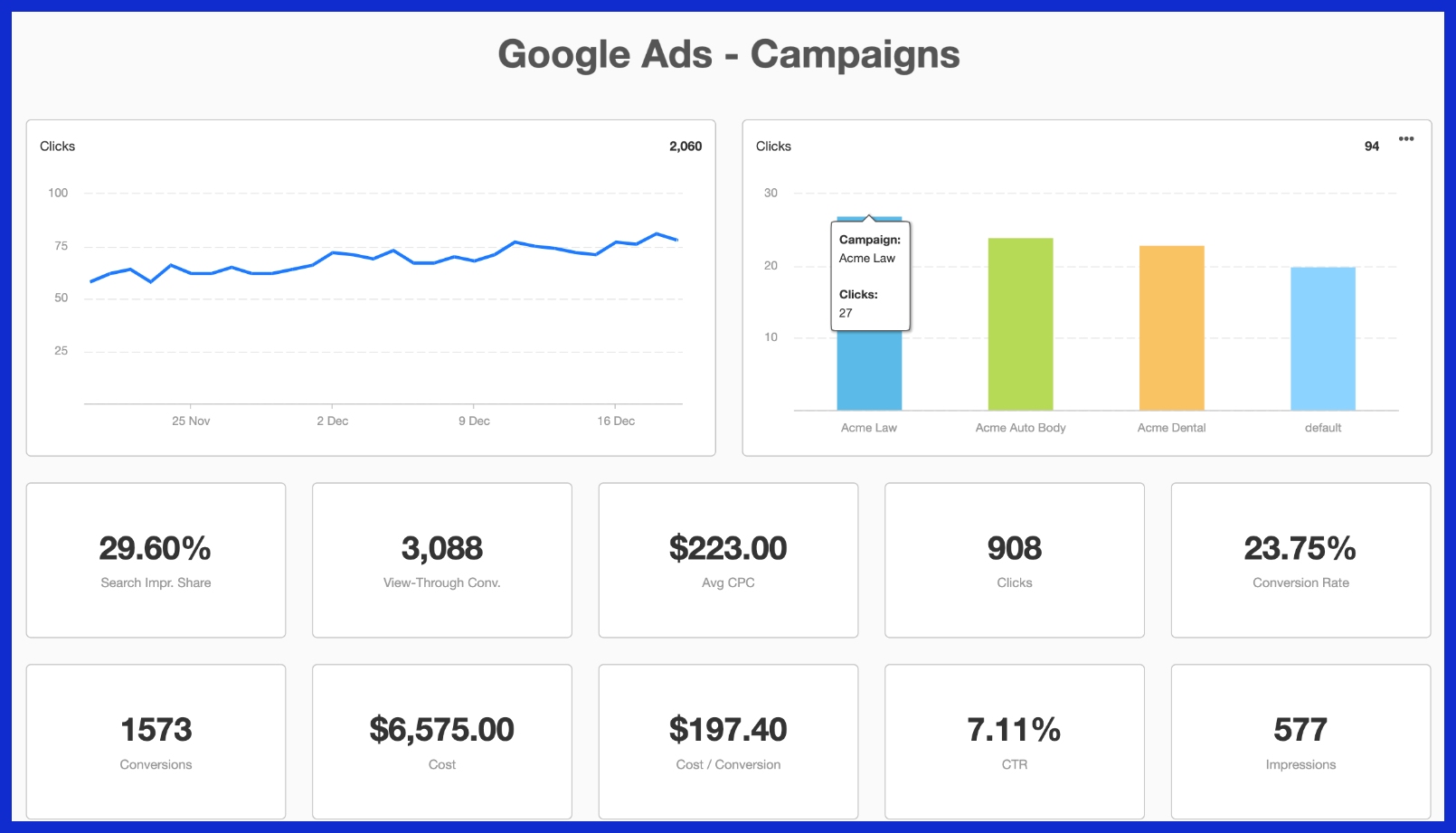
Click-through rate is an important SEO metric that indicates what percentage of people who view your website in search results click through. The effectiveness of your page titles and descriptions plays a crucial role in catching eyeballs. Even with high search engine rankings, a low CTR can occur, often signaling that your meta titles and descriptions are uninteresting or misaligned with user search intent.
For marketing agencies, having a core service page appear in the top three search engine result pages (SERPs) is a significant achievement! However, if it shows a CTR lower than 3%, it’s essential to optimize your title tag or meta description. By comparing against industry benchmarks, you can establish realistic SEO goals for your CTR.
Most agencies aim for a minimum of 5% CTR on branded keywords and 2-3% on competitive, non-branded terms. Regularly analyzing and optimizing your meta tags can enhance CTR and significantly boost your organic search traffic.
4. Gauge Domain Strength Signals

So domain strength, like domain authority, is one of our key SEO KPIs! Metrics such as Domain Authority (DA) and Domain Rating (DR) are indicative of how your site will perform in organic search. These scores merge considerations like the quality of your backlinks and the quantity of referring domains.
They show other signals that Google looks at to determine a website’s trustworthiness. Tracking your domain strength month to month can be a good way to visualize the long-term health of your SEO efforts. Backlinks are hugely influential here.
For instance, consider a Los Angeles-based law firm that gets a boost to its DR. This might occur following an appearance on local television news or a national legal directory. A strong backlink profile is critical to staying competitive in search. It further complicates things for your competitors to rank above you!
Knowing how strong your domain is compared to your direct competitors helps identify where you need to improve and informs your outreach strategy.
5. Monitor Overall Search Visibility
Search visibility is an essential SEO metric that tracks how frequently your site appears for relevant search queries. It ranges from 0%—indicating no rankings—to 100%—where you rank first for every targeted keyword. This crucial SEO KPI serves as a strong indicator of how much SERP real estate your site controls.
If your visibility increases, you are ranking for more keywords or in a higher position for the important ones. This figure is particularly helpful for gauging future traffic increases. It allows you to identify decreases sooner.
If your visibility is going down, you may be losing to competitors gaining traction or getting hit by an algorithm. For example, tracking visibility for branded vs non-branded is a good tactic. Pay special attention to branded vs non-branded terms and local vs national phrases!
Monitoring a drop in visibility data can effectively inform your content and link-building strategies, helping to further strengthen your high-performing content and boost overall SEO success.
6. Review On-Page Element Success
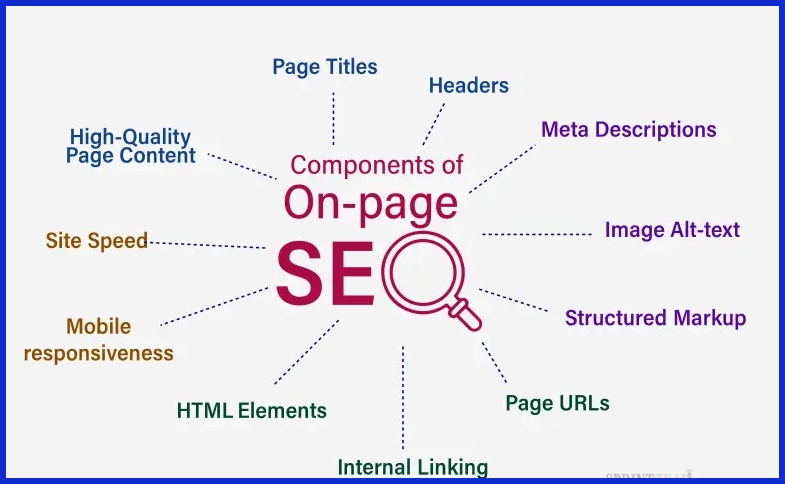
On-page SEO elements—titles, headings, meta descriptions, and content—are what give search engines and users an idea of what every page is about. Analyzing the success of these on-page elements should be a fundamental SEO practice. If a product page’s title and meta description are clear and match search intent, it’s more likely to rank high and draw clicks.
Not only do optimized on-page elements improve click-through rates, but they also encourage visitors to spend time and engage with your site. Conduct frequent audits through Screaming Frog or Google Search Console to expose any missing or duplicate tags.
The downside is that they expose bad headings and keyword stuffing. Easily implementable changes, such as optimizing headings to align with relevant keywords, frequently lead to clear-cut increases in rankings and user interaction.
7. Count Quality New Backlinks
New backlinks—links coming to your site from other authoritative websites—are the biggest SEO ranking factor. Not every link carries the same weight. One earned link from a large, trusted news outlet has far more value than a dozen smaller backlinks. It beats a hundred links from spammy blogs in your area.
Keep an eye on relevance and authority, especially. For example, a Los Angeles-based tech startup that lands coverage from a national tech magazine will likely see a boost in both DR and traffic. These tools, such as Ahrefs or Moz, will help you identify negative trends, disavow harmful links, and discover new linking opportunities.
8. Check Site Technical Fitness
Technical SEO is the foundation of search performance excellence. Site speed, mobile-friendliness, and Core Web Vitals are all metrics that tie back to user experience and, therefore, ranking. Google Search Console can flag website issues such as crawl errors, slow-loading pages, or missing sitemaps.
Even if your content is top-notch, a slow site or broken links can tank your rankings. So in 2015, mobile-friendliness became a requirement! If your site is difficult to navigate on mobile devices, you will suffer a drop in rankings as well as traffic.
Routine technical audits help ensure your site’s technical fitness and that you’re not falling behind due to avoidable issues.
9. Decode User Engagement Signals
User engagement metrics—bounce rate, pages per session, average session duration—indicate the quality of the overall user experience on your site. While these figures aren’t direct ranking factors, they point to content quality and user satisfaction.
If people are entering your page and bouncing within seconds, that’s a red flag that the content on that page isn’t delivering on what they’re looking for. Regular deep dives into user engagement metrics can inform stronger content development and improved site architecture.
For example, a SaaS provider might notice that users who view case studies have a higher average session duration, 2X longer on the site. These engaged users are, unsurprisingly, much more likely to request a demo.
10. Measure Lead Generation Impact
Lead generation KPIs measure the volume/quality of leads generated by YOUR SEO efforts. This is crucial for B2B, service-oriented businesses, and agencies. Tools such as Google Analytics allow you to configure goals based on form fills, phone calls, or resource downloads.
Knowing where leads come from in the conversion funnel—first touch, last touch, or somewhere in between—helps teams better allocate budget and effort. It’s organic search that’s bringing in an increasing portion of the leads! This is a strong indicator that your keyword and content strategy is doing the trick.
11. Calculate Key Conversion Rates
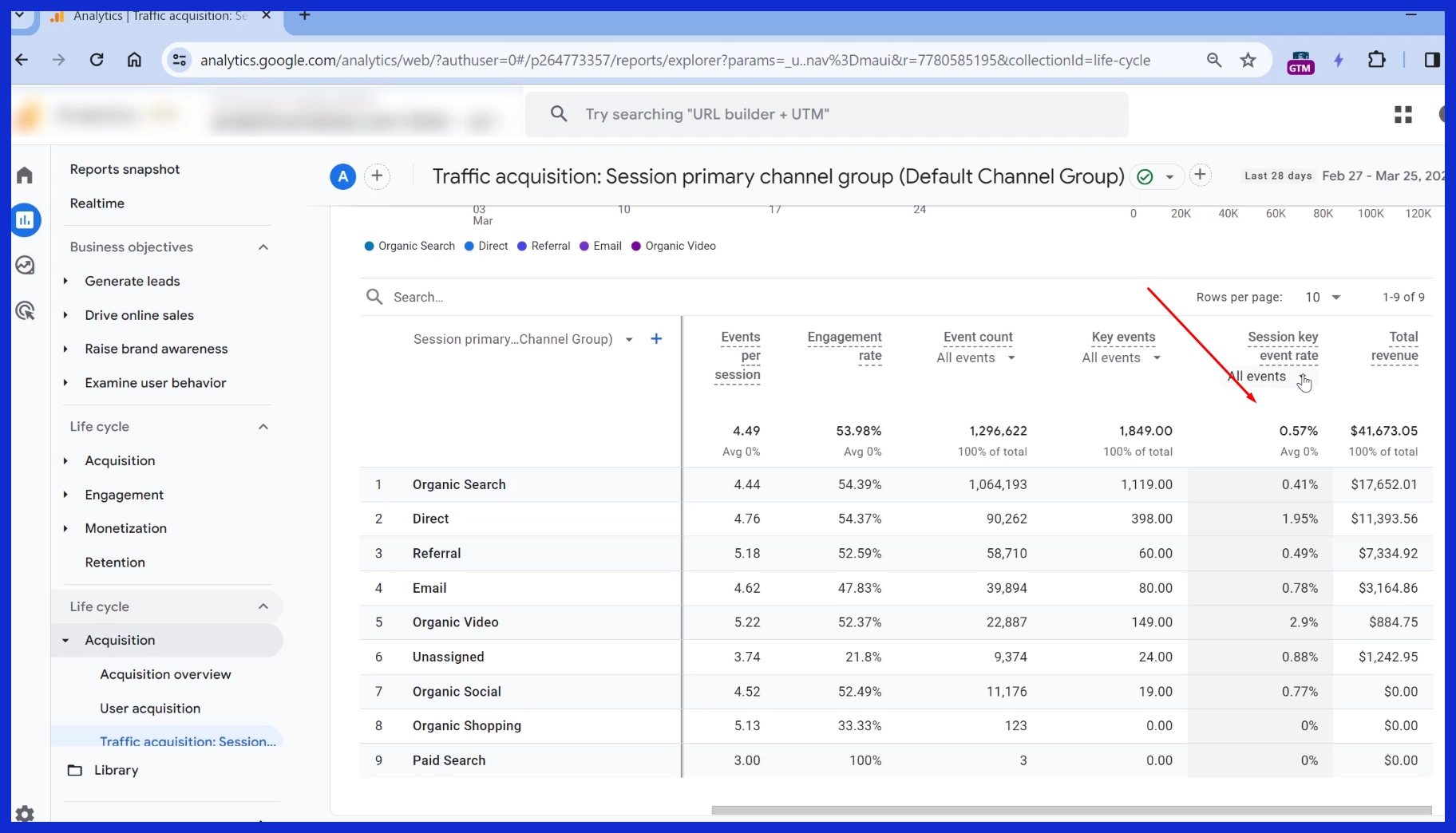
Conversion rate is a crucial SEO KPI that measures the share of visitors who take a desired action, like buying, signing up, or filling out a form.
Making Sense of Your Data
SEO data tends to stack up, but value is found in making it perform for you. Consistent monitoring allows you to identify positive and negative trends, measure success, and identify what isn’t working. It’s more than just crunching data and reading lines of numbers.
It’s not just about the numbers. It’s about aligning those numbers to your priorities and connecting the dots. For agencies and internal teams, this translates to choosing KPIs based on your organizational goals. Then, you can monitor them over time—quarterly, annually, or even over multiple decades.
Metrics such as time on page, bounce rate, click-through rate, and more all offer useful information. Keep in mind that not every metric is a KPI. KPIs are the ones that are linked directly to your most important objectives.
Turning numbers into stories is the best way to get your entire team moving in the same direction. A simple narrative with data—be it a single chart or graph—will help your audience understand and communicate the message.
Tools like KPI.me allow stakeholders to visualize and communicate these stories easily and efficiently, ensuring that all parties are informed.

Link Traffic to User Actions
Traffic numbers only tell half the tale. Get a little more granular by looking at where people are arriving from and what actions they take afterward. Monitor user paths to determine whether they convert, register, or drop off.
A bounce rate over 80%, for instance, might indicate that the page served users’ needs quickly. Alternatively, it may indicate that you have a content-user intent mismatch. Analytics tools have made this easier to track and connect link traffic sources to real user actions, allowing you to make more informed, smarter marketing decisions.
Monitor & Report KPIs Smartly
Monitor and Report
Tracking and reporting SEO KPIs is often seen as a numbers game. It’s more about creating a practice that encourages teams to identify and measure what matters, ensuring they stay on track and make meaningful progress.
Providing teams with transparent, consistent information helps keep everyone aligned and informed about what’s working. Of course, transparency—public and open reporting instills public trust and allows teams to respond quickly to emerging data.
At least this is how often the majority of firms monitor and report KPIs – weekly, monthly, or daily, depending on the expectation of stakeholders. This reliable cadence gets everyone on the same page and creates a culture of accountability.

This is where dashboards come in. Tools such as Google Looker Studio or KPI.me allow teams to view live data on organic traffic, keyword rankings, backlinks, and more. A true dashboard would show these results in a very visual, engaging, and easy-to-understand format.
This allows teams to identify trends and respond in real-time.
Set Up Tracking Right
Setting up tracking properly really is the key. Begin by implementing the right analytics tools—Google Analytics, Google Search Console, and SEMrush are the best of the best.
Determine specific objectives, such as the number of downloads or contact form completions. Ensure a clean implementation through periodic audits to identify errors.
When you have quality tracking, you have accurate numbers you can rely on to make smarter decisions.
Top Tools for KPI Data
- Google Analytics
- Google Search Console
- SEMrush
- Ahrefs
- Moz Pro
Relying on one or the other of these tools for a complete picture is shortsighted. Google Analytics tracks user behavior, SEMrush shows keyword growth, and Ahrefs digs into backlinks.
Choose the tools that best meet your organizational goals and objectives.
Build Action-Driven SEO Reports
Report smartly. Your reports shouldn’t look like a data dump. Help put numbers in context, illustrate what is most important, and provide guidance on next steps.
Provide visual aids like charts and bullet points to convey your data and recommendations clearly. These action-driven reports better align the team on next steps, prioritize updates, and connect SEO efforts to tangible outcomes.
Conclusion
SEO KPIs hold teams accountable. They tell you what’s working and what’s flopping. Clicks, rankings, and bounce rates don’t make sense. When you’re using the right KPIs, it’s easy to see big wins in the making. You’ll know which pages are drawing in the visitors or if traffic crashes following a site change.
People who monitor KPIs don’t play make-believe—they have actual evidence of what to do next. Using intelligent, automated reporting helps keep all stakeholders informed and saves time and friction.
Agencies and internal teams who would rather avoid the drama and stress and just focus on making real improvements turn to tools like KPI.me. Interested in avoiding the trial and error and exceeding your clients’ expectations? Stop tracking vanity metrics and watch your results pile up.
Frequently Asked Questions
What are SEO KPIs?
SEO KPIs, which are essential SEO metrics, serve as the key performance indicators for your SEO strategies, helping you assess their effectiveness and the impact on your business. They play a crucial role in monitoring SEO progress and identifying areas to enhance your website’s presence on search engine results.
Why should I track SEO KPIs?
Without tracking important SEO KPIs, you won’t know whether your SEO efforts are yielding results or not. These crucial SEO metrics help you make smart decisions, focus on what works, and prove the value of SEO to your team or clients.
What are the most important SEO KPIs for businesses in the US?
- Organic traffic
- Organic keyword rankings
- Conversion rates
- Bounce rates
- Local search visibility
These metrics are directly tied to the success and profitability of your site within the US market.
How often should I review my SEO KPIs?
For short-term and fast-moving campaigns, monitor your technical SEO KPIs weekly to identify trends early and pivot strategies faster for better SEO performance.
Can SEO KPIs help my local Los Angeles business?
Monitoring local SEO KPIs, such as Google Business Profile views and local pack rankings, can greatly improve your business’s visibility and contribute to your SEO success in attracting more customers searching for your Los Angeles business!
What tools can I use to monitor SEO KPIs?
To monitor important SEO KPIs, utilize various SEO tools like Google Analytics, Google Search Console, and SEMrush. While these may be costly, they are incredibly robust, easy to use, and provide deep insights into SEO performance for US-based sites.
How do SEO KPIs drive business decisions?
SEO KPIs illuminate both the successes and areas needing improvement, allowing you to track SEO performance effectively. By focusing on important SEO metrics, you can invest wisely in proven strategies and enhance your digital footprint.

